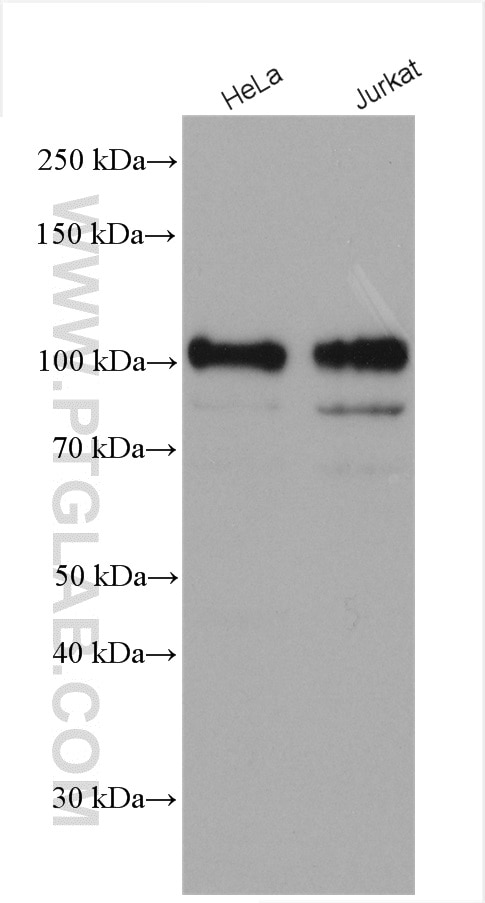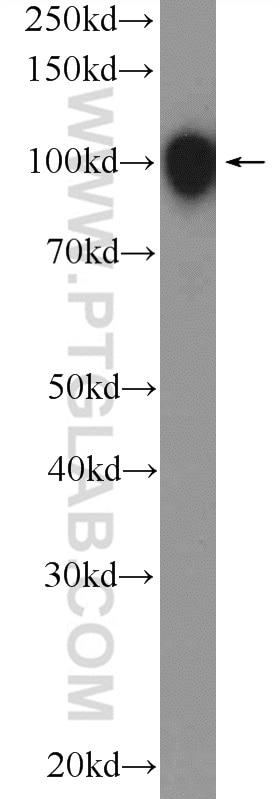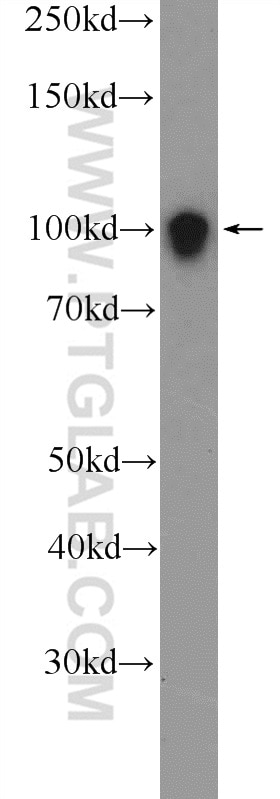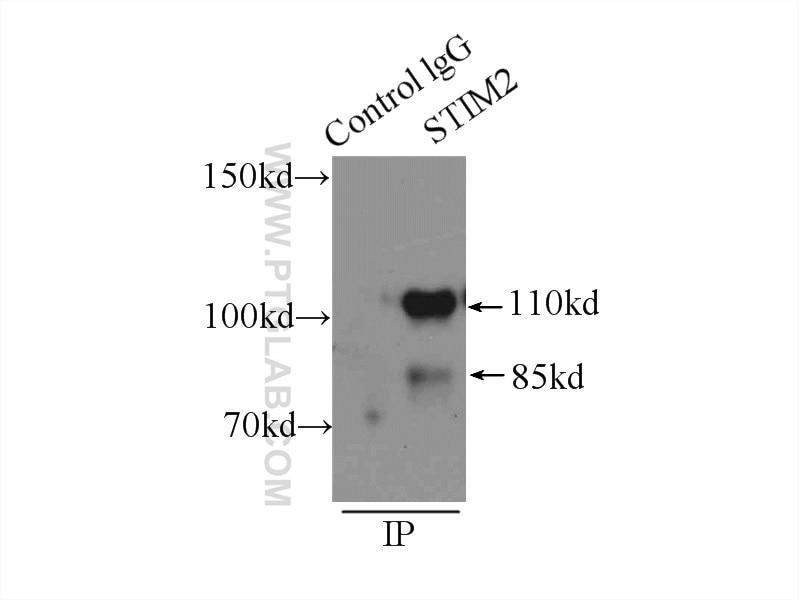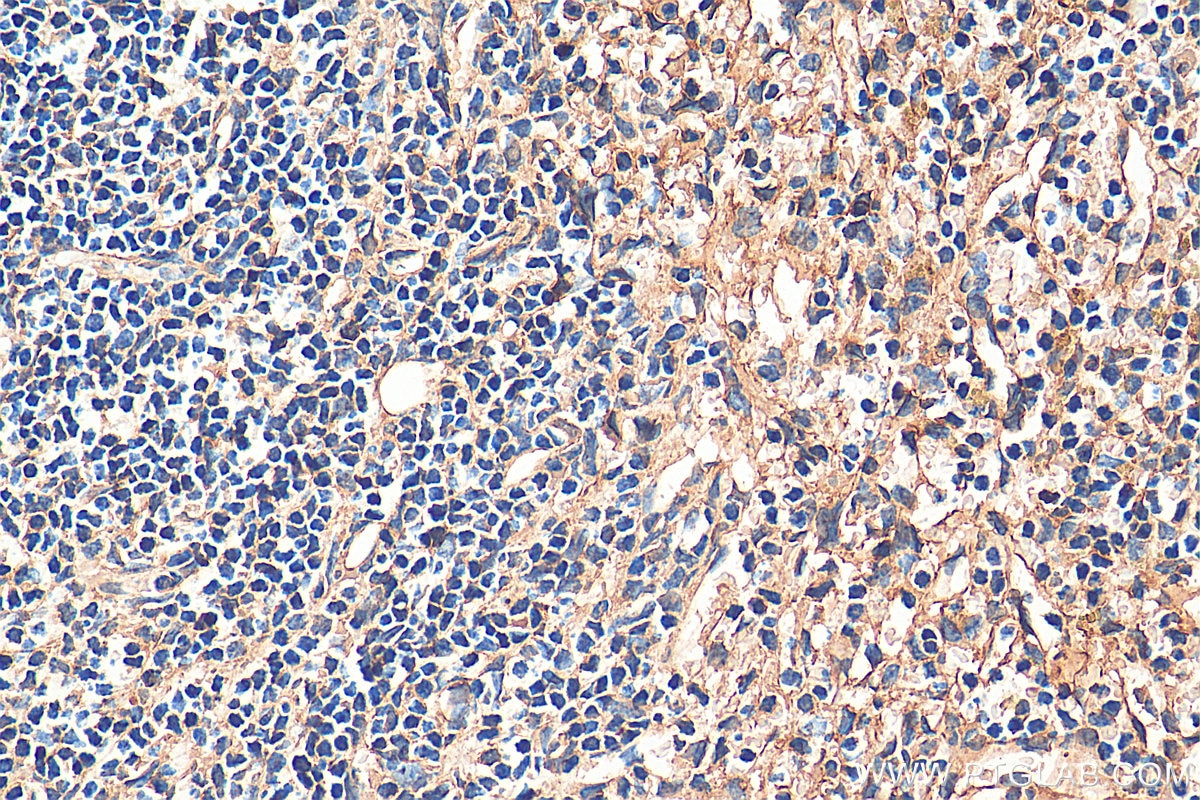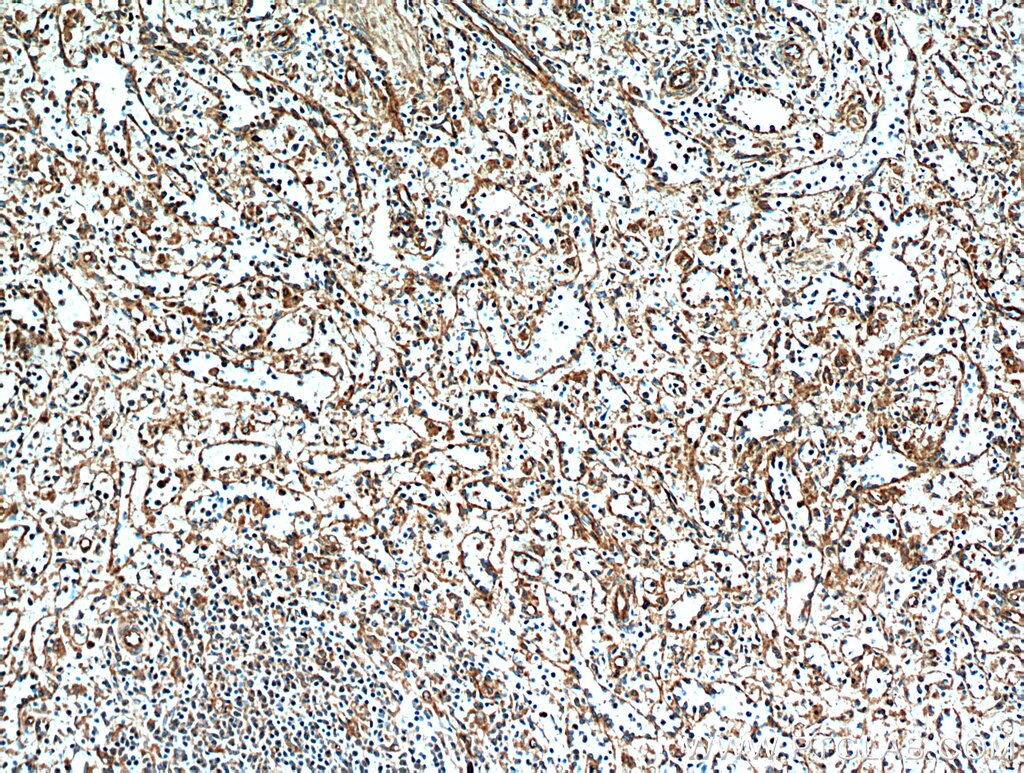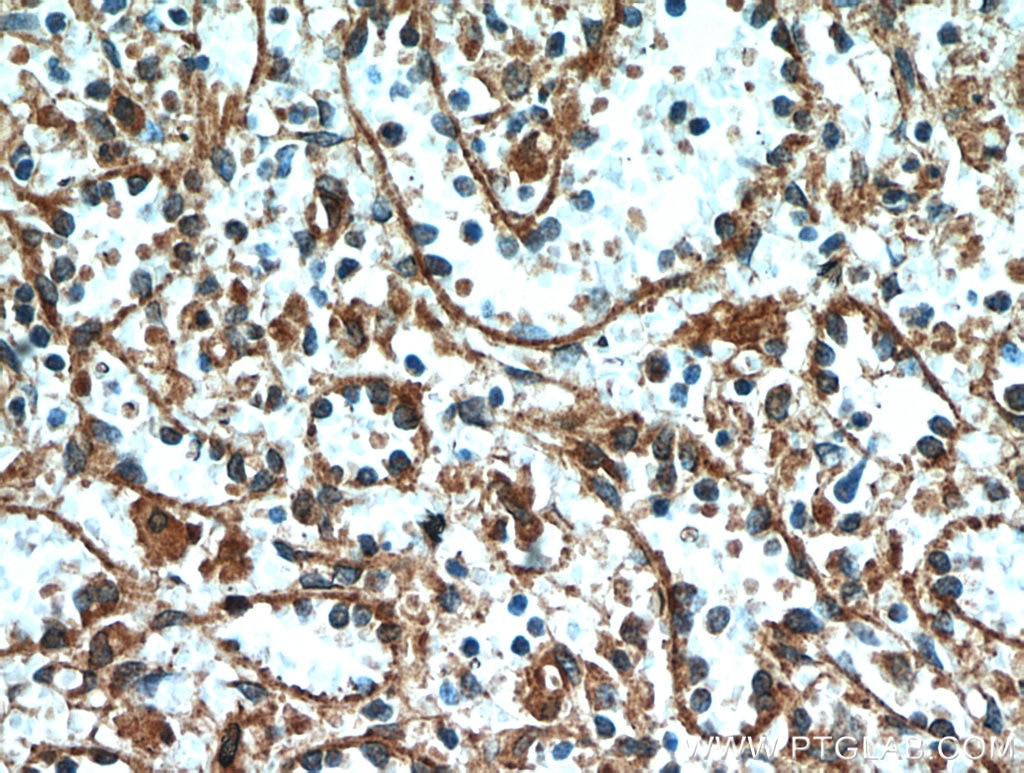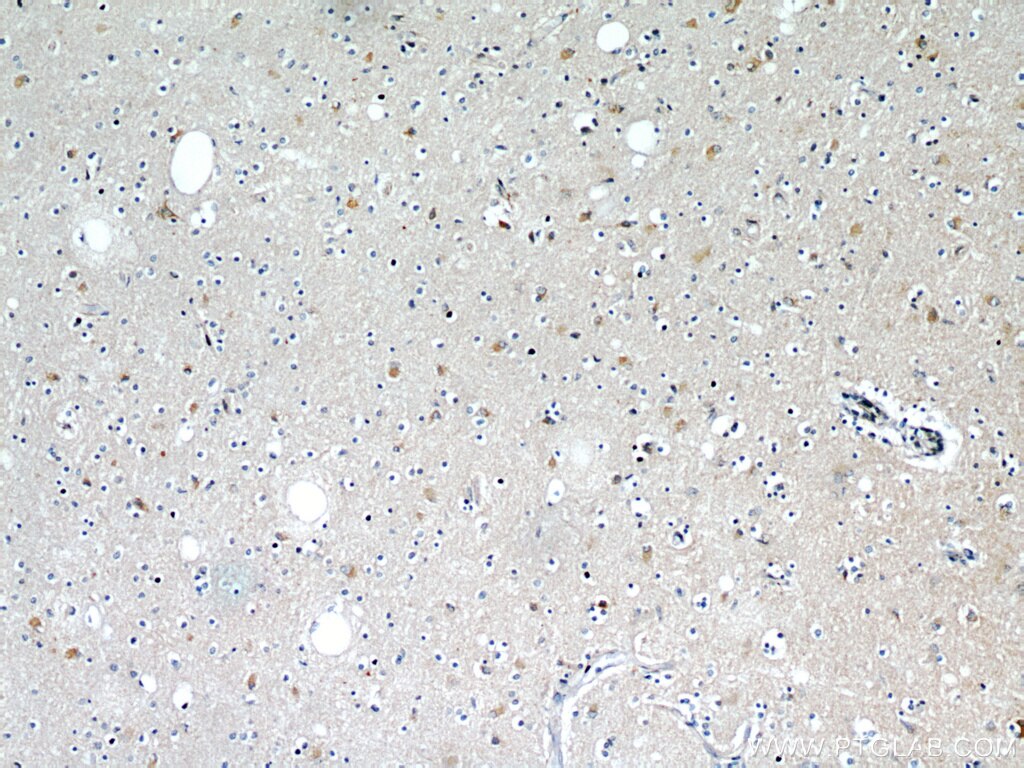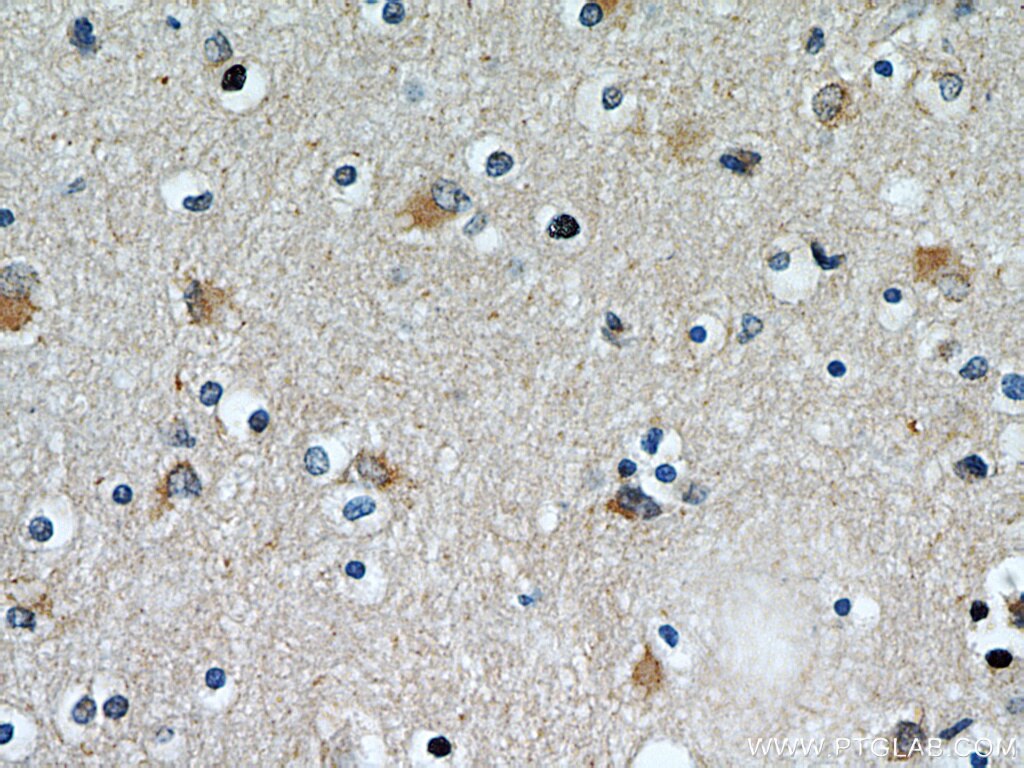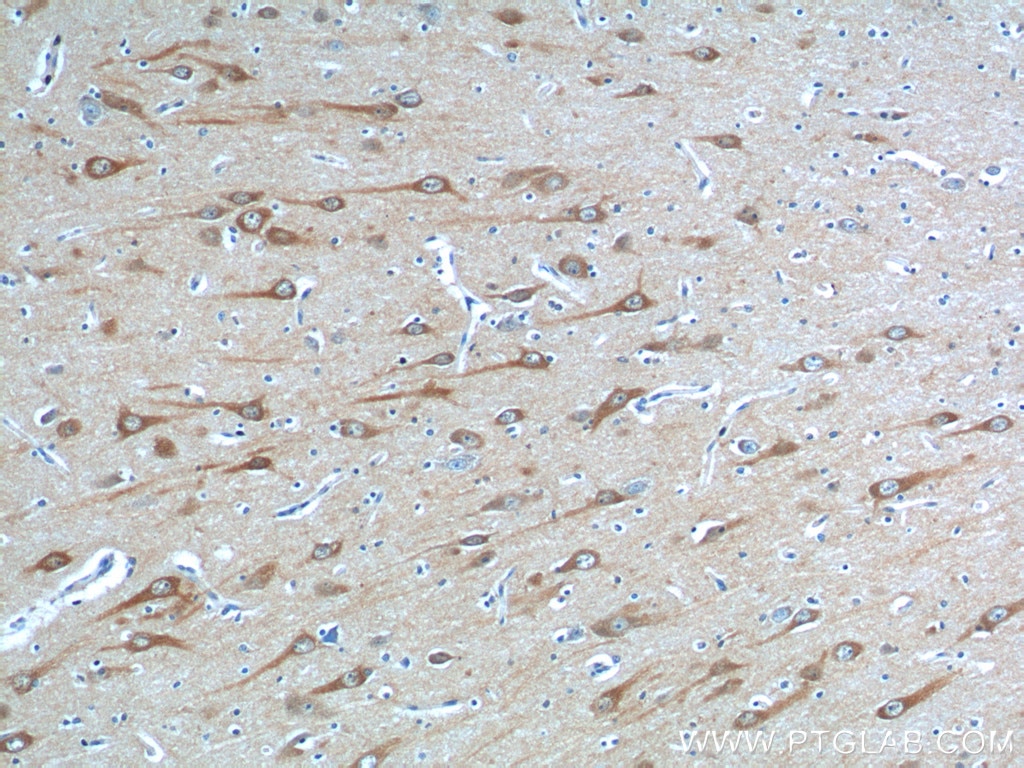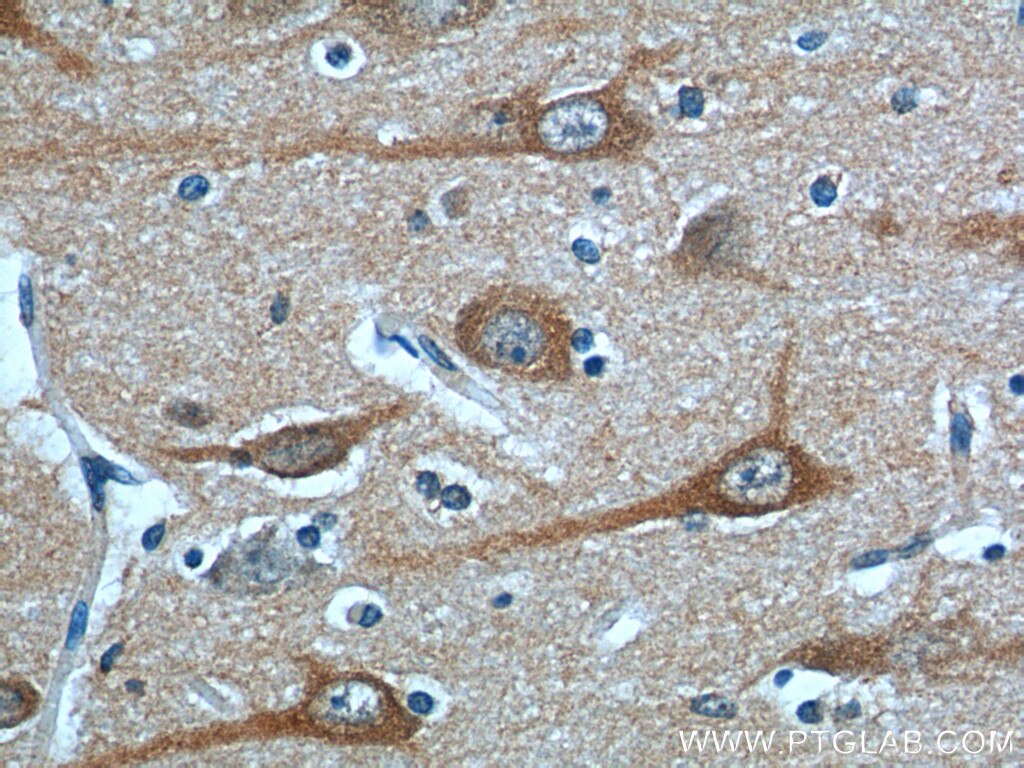- Phare
- Validé par KD/KO
Anticorps Polyclonal de lapin anti-STIM2
STIM2 Polyclonal Antibody for WB, IP, IHC, ELISA
Hôte / Isotype
Lapin / IgG
Réactivité testée
Humain, rat, souris
Applications
WB, IHC, IF, IP, ELISA
Conjugaison
Non conjugué
N° de cat : 21192-1-AP
Synonymes
Galerie de données de validation
Applications testées
| Résultats positifs en WB | cellules HeLa, cellules HEK-293, cellules Jurkat |
| Résultats positifs en IP | cellules HEK-293 |
| Résultats positifs en IHC | tissu splénique de souris, tissu cérébral humain, tissu splénique humain il est suggéré de démasquer l'antigène avec un tampon de TE buffer pH 9.0; (*) À défaut, 'le démasquage de l'antigène peut être 'effectué avec un tampon citrate pH 6,0. |
Dilution recommandée
| Application | Dilution |
|---|---|
| Western Blot (WB) | WB : 1:500-1:3000 |
| Immunoprécipitation (IP) | IP : 0.5-4.0 ug for 1.0-3.0 mg of total protein lysate |
| Immunohistochimie (IHC) | IHC : 1:50-1:500 |
| It is recommended that this reagent should be titrated in each testing system to obtain optimal results. | |
| Sample-dependent, check data in validation data gallery | |
Applications publiées
| KD/KO | See 5 publications below |
| WB | See 11 publications below |
| IF | See 3 publications below |
| IP | See 1 publications below |
Informations sur le produit
21192-1-AP cible STIM2 dans les applications de WB, IHC, IF, IP, ELISA et montre une réactivité avec des échantillons Humain, rat, souris
| Réactivité | Humain, rat, souris |
| Réactivité citée | rat, Humain, souris |
| Hôte / Isotype | Lapin / IgG |
| Clonalité | Polyclonal |
| Type | Anticorps |
| Immunogène | STIM2 Protéine recombinante Ag15530 |
| Nom complet | stromal interaction molecule 2 |
| Masse moléculaire calculée | 754 aa, 85 kDa |
| Poids moléculaire observé | 85-115 kDa |
| Numéro d’acquisition GenBank | BC146661 |
| Symbole du gène | STIM2 |
| Identification du gène (NCBI) | 57620 |
| Conjugaison | Non conjugué |
| Forme | Liquide |
| Méthode de purification | Purification par affinité contre l'antigène |
| Tampon de stockage | PBS with 0.02% sodium azide and 50% glycerol |
| Conditions de stockage | Stocker à -20°C. Stable pendant un an après l'expédition. L'aliquotage n'est pas nécessaire pour le stockage à -20oC Les 20ul contiennent 0,1% de BSA. |
Informations générales
STIM2, also named as KIAA1482, functions as a highly sensitive Ca2+ sensor in the endoplasmic reticulum which activates both store-operated and store-independent Ca2+-influx. Regulates basal cytosolic and endoplasmic reticulum Ca2+ concentrations. Upon mild variations of the endoplasmic reticulum Ca2+ concentration, STIM2 translocates from the endoplasmic reticulum to the plasma membrane where it probably activates the Ca2+ release-activated Ca2+ (CRAC) channels ORAI1, ORAI2 and ORAI3. STIM2 may inhibit STIM1-mediated Ca2+ influx. STIM2 has 2 isoforms 105kd and 115kd with Differential levels of phosphorylation.
Protocole
| Product Specific Protocols | |
|---|---|
| WB protocol for STIM2 antibody 21192-1-AP | Download protocol |
| IHC protocol for STIM2 antibody 21192-1-AP | Download protocol |
| IP protocol for STIM2 antibody 21192-1-AP | Download protocol |
| Standard Protocols | |
|---|---|
| Click here to view our Standard Protocols |
Publications
| Species | Application | Title |
|---|---|---|
Cell Res Cholesterylation of Smoothened is a calcium-accelerated autoreaction involving an intramolecular ester intermediate.
| ||
Cell Mol Life Sci STIM2 regulates NMDA receptor endocytosis that is induced by short-term NMDA receptor overactivation in cortical neurons
| ||
Oncotarget The calcium channel proteins ORAI3 and STIM1 mediate TGF-β induced Snai1 expression.
| ||
Neurobiol Dis Inhibiting store-operated calcium entry attenuates white matter secondary degeneration following SCI. | ||
Biochem J STIM1 negatively regulates Ca2+ release from the sarcoplasmic reticulum in skeletal myotubes. | ||
Cell Signal RGS10 physically and functionally interacts with STIM2 and requires store-operated calcium entry to regulate proinflammatory gene expression in microglia.
|
